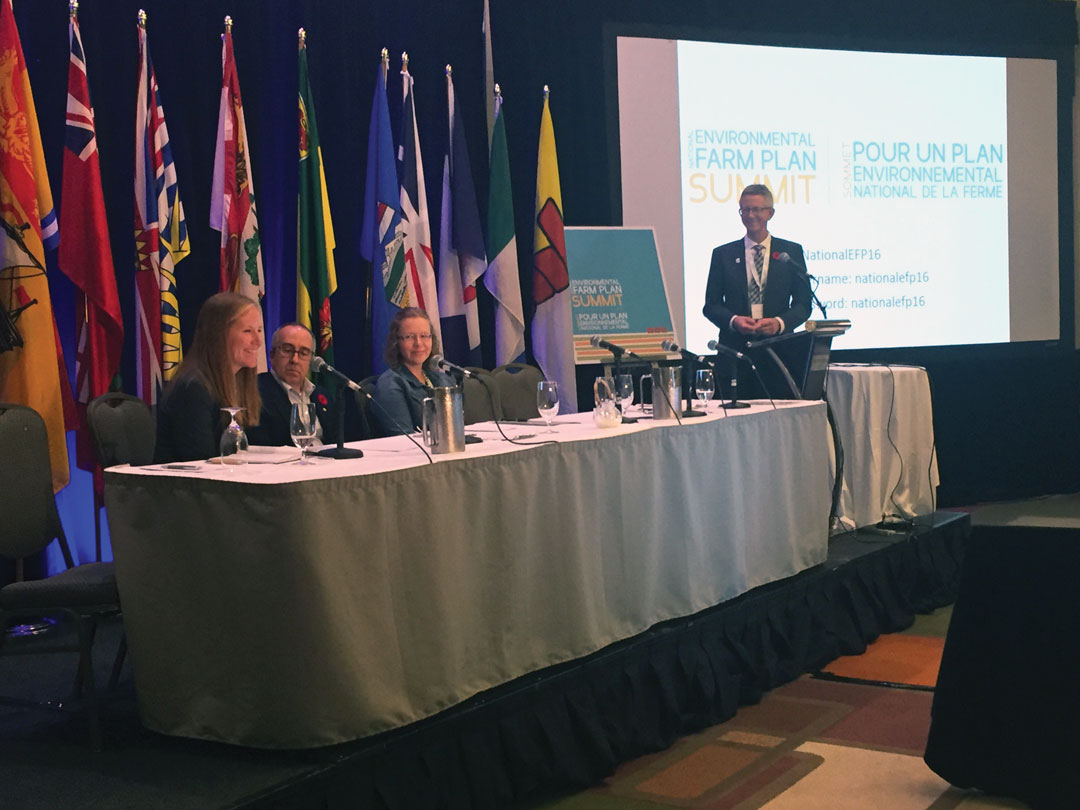STEPPING TOWARD SUSTAINABILITY
NATIONAL ENVIRONMENTAL FARM PLAN IS ON THE HORIZON
BY KARIN OLAFSON
Farm organizations, buyers and governments from across Canada came together in Ottawa at the beginning of November last year to discuss one thing: the formation of a National Environmental Farm Plan (NEFP). According to Erin Gowriluk, government relations and policy manager for the Alberta Wheat Commission and chair of November’s summit, there is strong support for the concept of a national program—94 per cent of surveyed participants see value in a national environmental farm plan program now and into the future—and its development is already underway.
Environmental farm plans (EFPs) aren’t new. The first EFP was in Ontario and it rolled out in 1993, while the EFP in Alberta started in 2003. But the ones that currently exist are all provincial, rather than national.
Paul Watson works for the Agricultural Research and Extension Council of Alberta and is the director of the Alberta EFP. He’s also the interim chair of the NEFP Steering Committee. He describes EFPs as voluntary, whole-farm environmental risk self-assessments that are done by producers. Regardless of which provincial EFP a producer is working with, the goal is sustainable farming. A national program will harmonize the various provincial programs.
A harmonized national program will also take into account how varied farming is in Canada. “That’s critical,” said Gowriluk. “This is not a one-size-fits-all solution in Canada.”
According to Watson, the two main reasons a national plan is in the works now are to provide a simple sustainability solution to producers and to provide consistency.
“Buyers want to be able to tell people in the outside world specifically what a farm plan means. An NEFP will mean that there is a Canadian industry-defined minimum standard,” said Watson. “It doesn’t matter if you’re in the Yukon or Quebec or British Columbia or elsewhere in Canada. If you’ve done a farm plan, then you’ve met a base standard—and we’re currently working on defining that national base standard.”
In a nutshell, this is all because sustainable farming matters now more than ever to consumers—a fact that hasn’t been lost on the companies buying agricultural products. “The demand [from buyers] for sustainably sourced products has been increasing over the past six years and will certainly continue to increase further,” said Watson.
With a national program, buyers will be supplied with ample data to prove to their customers that they are supporting their sustainable sourcing claims. Simply, one of the goals of the NEFP is to demonstrate that farmers are meeting buyers’ environmental objectives.
Gowriluk said that if provincial EFPs aren’t harmonized into a national solution, then buyers are going to come to producers with their own set of requirements, which isn’t ideal. “EFPs are made by producers, for producers, and EFPs are already recognized and trusted by farmers,” said Gowriluk. “A new program would be a major uphill battle for companies in terms of farmer uptake.”
Consider that 35 per cent of Canadian producers have completed an EFP, covering 50 per cent of the arable land in Canada. Based on that, companies can see that farmers and ranchers are already on board with the EFP concept.
Progress on the NEFP continues, and the program should be up and running by 2018. Once the national program is launched, participating producers will be well positioned to meet international market requirements.
“Farmers are already doing a lot of good things when it comes to sustainability,” said Watson. “If we can capture exactly [what they’re doing], I think Canada will become a preferred supplier in world markets. We just have to be able to tell the buyers our sustainable growing story.”







Comments